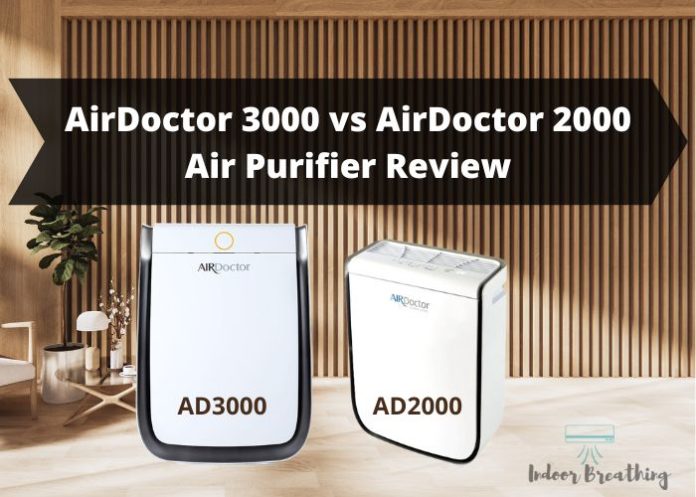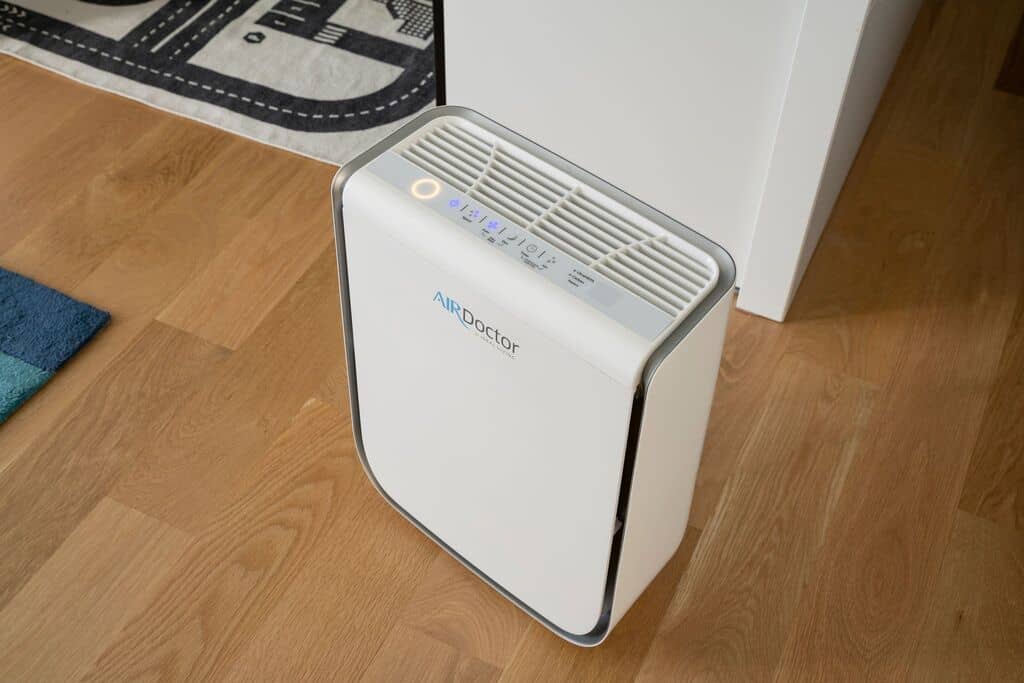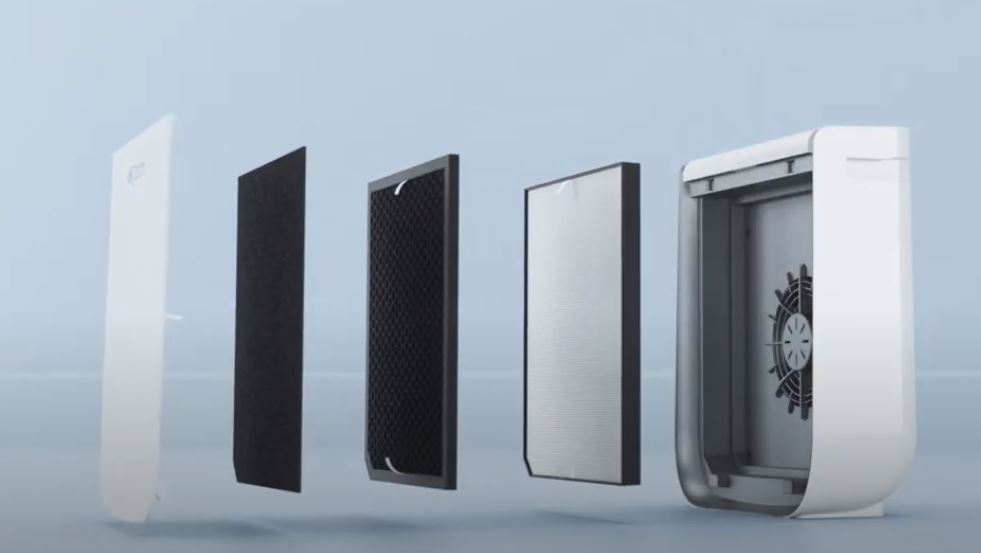Imagine relaxing in your cozy room, taking in the soothing ambiance, when suddenly, you realize that the air you’re breathing might not be as clean as you thought!
Fear not, for there’s a hero ready to rescue your lungs and refresh your space in the world of air purification.
In this article, we embark on an exciting journey through indoor air quality, unearthing the champions of clean air – the best air purifiers for your room – AirDoctor.
And yes, we will compare AirDoctor’s bestseller and oldest model, the 3500, against the newest brother, the Airdoctor 2000.
Get ready to breathe easier, sleep soundly, and say goodbye to airborne nasties with our top picks!
Table of Contents
How Does Air Doctor 2000 Differ From Air Doctor 3500?
We have already written about AirDoctor 3500; you might check it out before continuing to read this comparison.
Design
Let’s begin with its look. AirDoctor 2000 is the closest of their models to the 3500 by design. The form is similar but smaller. AD2000 is 13.85 inches wide and 18.72 inches tall. AD3500 is 2 inches wider and 4 inches taller.
AD2000 model is also almost half lighter, weighing only 10 lbs.
AirDoctor 2000, similar to 3500, has handles on both sides of the control panel on the top of the unit with the same functions – electronic touch buttons – on/off, speed, auto, dim, timer, and ion function.
The only difference is the air quality monitor, which is on the top of the unit for AD2000 instead of the front panel as it is for AD3500.
So, if you are unfamiliar with Air Doctor models, you may even mix these units, and the air quality monitor helps you distinguish between units.
Below is a video overview of AirDoctor 2000.
Performance/Filters

This is the best part when discussing AirDoctor’s air purifiers because they are so good.
AirDoctor 2000 has the same filters as AD3500, which are placed similarly, hidden behind the front panel.
First, the pre-filter removes the largest particles, such as pet hair and dust, and then comes the carbon/VOC filter, which reduces toxic ozone, gas, odors, and VOCs.
The last one is the UltraHEPA filter, which removes pollutants as small as 0.003 microns. Yes, you read that right. 90% of air purifiers use HEPA filters that can trap 0.3 microns, but AirDoctor units AD2000 and AD3500 can trap 100 times smaller particles.
That includes viruses, bacteria, smoke, mold, pollen, dust mites etc.
Also, both units have UV-C or UV-Clean Technology – ultraviolet (UV) light to kill or neutralize certain airborne pathogens, such as bacteria and viruses.
So the filters are the same, then what’s the difference?
Size and power. AD2000 filters are smaller, and the fan is weaker than the AD3500 model.
In numbers, that’s 162 cubic feet per minute (CADR smoke) for AD2000 versus 340 CFM for AD3500.
In other words, to clean air 4x per hour (air in the room goes through an air purifier 4 times in one hour), Air Doctor 2000 can do that in a 305 square feet room while Air Doctor 3000 in a 638 square feet room.
So AD2000 can handle twice the smaller room.
Features

-
Air Quality Sensors And Monitoring
AD2000 and AD3500 have laser sensors that monitor the air quality in real-time and adjust the air purifier’s operation accordingly. You also can see that – both models show three colors – red for poor, yellow for moderate, and blue for good air quality in your room.
-
Multiple Fan Speeds And Auto Mode
Users can adjust the fan speed to control noise levels and the air purified rate. Both units have four fan speeds. But at least you are not sleeping and need a quieter fan speed.
I suggest just leaving it on auto mode so it adjusts the fan speed automatically based on air quality in your space.
-
Timer And Scheduling
This feature allows users to set specific times for the air purifier to operate or remotely turn it on and off.
-
Filter Replacement Indicators
This is standard in the industry as most air purifiers have these indicators that notify users when it’s time to replace the filters, ensuring optimal performance.
More about filter replacement is read further in the article.
Noise Level
The noise level of the air purifier is an important consideration, especially if you plan to use it in a bedroom or quiet space. And if we compare AD2000 to 3500, it is made for smaller spaces, usually bedrooms.
AD2000’s noise level is between 40 and 55dB, while AD3500’s is 39-59 dB. While those are not the best numbers I have seen on air purifiers, they are also not high. While one can easily sleep with 40dB of noise in the room, another can’t, so that’s individual.
But both units are quite quiet, even on their highest fan speeds.
Power Consumption
If you run both models 24/7 and electricity costs $0.12/kWh, then on average, you will spend $2.50 monthly to run AD2000 and $4.46 for AD3500.
That’s cheap compared to what health benefits these units provide you.
Filter’s Life And Maintenance
Both models have the same filters, so their lifespan is also the same. On average, 6 months for the carbon filter and 12 months for the UltraHEPA filter.
Changing filters is easy as you remove the front panel, which is simple – it is attached to a unit with magnets. Then, remove dirty filters and install new ones.
Additionally, you will need to clean the air quality sensor, but that is also an easy task.
Which Is Better: AD2000 Or AD3500?
If we are looking for the best performance, AD3500 is a clear winner, but if the question is which is better for you, you must answer where you want to use it.
If you need to clean smaller rooms like a bedroom, go for AD2000 – you will get superb performance and a lower price. Also, filter change and maintenance will cost you less.
If you have dirty air and want to clean it fast, go for AD3500 for larger rooms.
Update! Not both models have wi-fi connected app. AD2000 with wifi is called AD2000i and costs $100 more than the original model. AD3500 with wifi is AD3500i and costs $100 more than the standard model.
If you have about 700 square feet of large space, go for the AD5500 model. We reviewed AD5500 before here.






